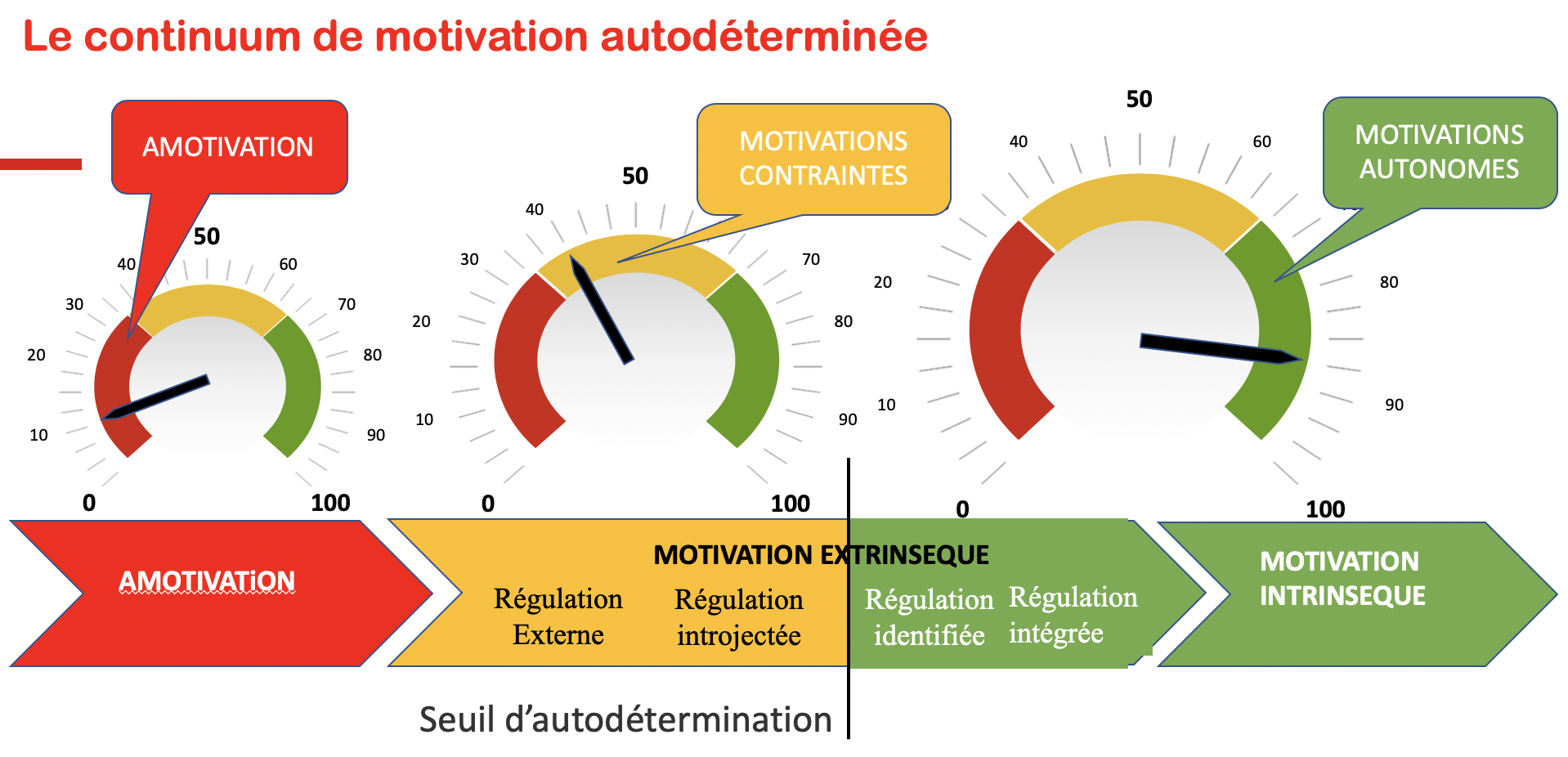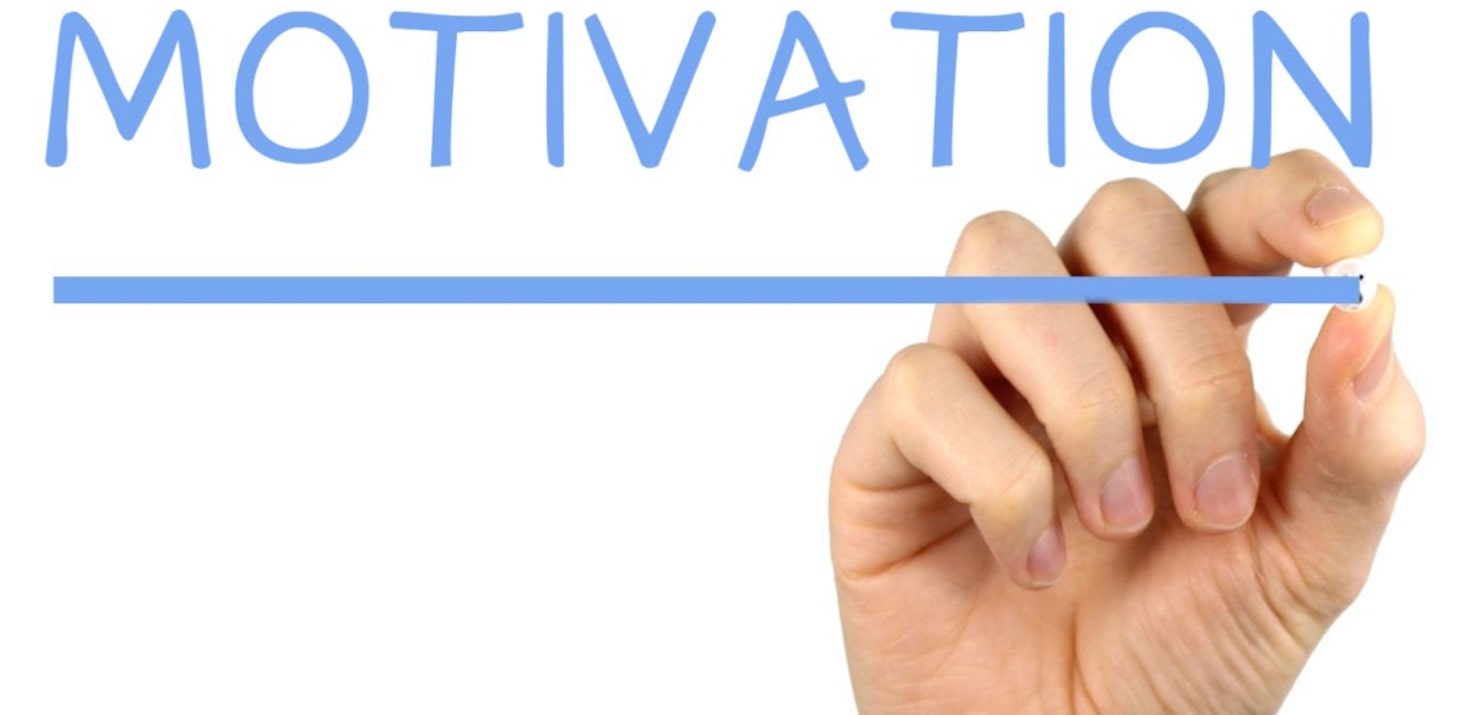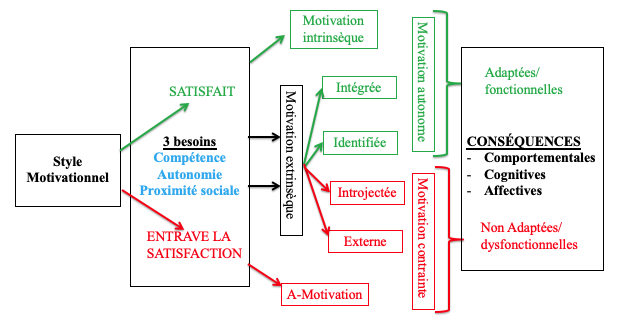- Share
- Share on Facebook
- Share on X
- Share on LinkedIn
What is motivation?
It’s the reason for our behaviors, it’s what drives us to act.
Motivation is responsible for the direction and intensity of behavior (Deci, 1975).
How does motivation work?
There are about a hundred theories of motivation (Fenouillet, 2016). One of the most heuristics is the Self-Determination Theory (TAD, Ryan & Deci, 2017). Its specificity is to apprehend motivation according to a qualitative approach that distinguishes different types of motivation. These different forms of motivation are organized on a continuum that goes from contained motivation to autonomous motivation.
 Self-determined motivation continuum
Self-determined motivation continuum
- Amotivation = feeling of resignation.
- Example: "I d’n't know why I go to school, if I could I woul’n't go." - Externally regulated extrinsic motivation = forced action by external pressure.
- Example: "I come to school to avoid punishment for absenteeism." - Extrinsic motivation with introjected regulation = forced action by internal pressure.
- Example: "I go to school to please my parents, so as not to disappoint them." - Extrinsic motivation with identified regulation = the activity makes sense for the individual.
- Example: "I come to school because it is useful for my future." - Extrinsic motivation with built-in regulation = activity consistent with the individu’l's values.
- Example: "I go to school because ’t's important to me." - Intrinsic motivation = activity practiced for pleasure.
- Example: "I go to school because I like to learn, ’t's interesting."
According to the TAD, three basic psychological needs are considered the nutrients for quality motivation:
- the need for autonomy (i.e., the individu’l's desire to be the origin of his behaviors)
- the need for competence (i.e., an individu’l's desire to be able to respond effectively to the demands and challenges of his or her environment)
-
the need for relatedness (i.e., the desire to be connected to other people, to receive attention from people important to o’e's self and to belong to a social group)
How to foster quality motivation?
As shown in the figure below, the motivational style of the teacher will affect the motivation and commitment of the students through the satisfaction or frustration of these psychological needs. The teacher’s motivational style is characterized by three bipolar dimensions that support or threaten these needs.
- Autonomy support (e.g., being positive, flexible, and acknowledging difficulties by giving more explanations) vs. control or coercion (e.g., being in a hurry, taking charge, and being negative).
- Structure (e.g., setting goals to be achieved, determining the means to achieve them, and giving clear direction) vs. chaos (e.g., expectations and direction are unclear, no opportunity to learn and feel competent is offered).
- Involvement (e.g., affection, inclusion, trust, and attention are expressed in a warm, consistent, and unconditional manner) vs. neglect (e.g., being cold, distant, and hard on students).
The literature shows that when teachers support the psychological needs of their students, they develop adaptive learning behaviors such as increased self-motivation and engagement, decreased amotivation, more positive emotions, use of more effective learning strategies, and better academic performance (Su & Reeve, 2011). In addition to ADP, other approaches have also been shown to be effective in improving students’ school experiences, including their well-being.
Self-Determination Theory model
For more information on the use of self-determination theory for training purposes :
For more information on the measurement of the different constructions :
- Share
- Share on Facebook
- Share on X
- Share on LinkedIn

